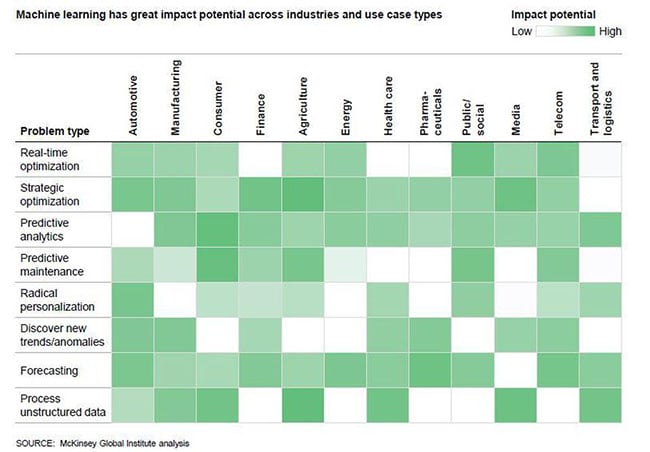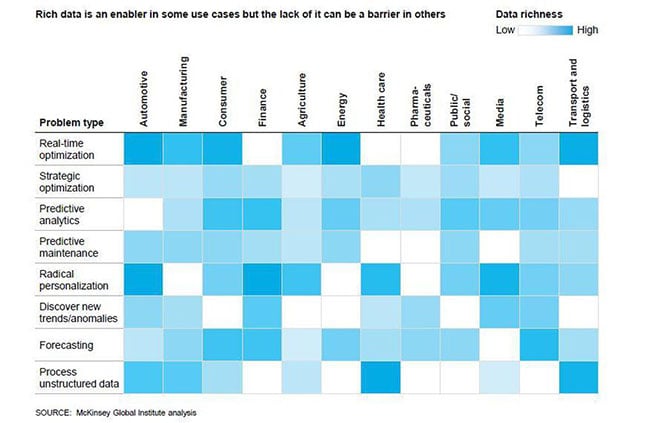Getting the most out of the massive amount of data generated by even moderate retail operations requires turning information into wisdom according to data-information-knowledge (DIKW) pyramid.
Many organizations get stuck at the lower rungs of this ladder, focusing on an endless cycle of human-generated reports and presentations.
The fastest and most effective way to move from raw data to wisdom is incorporating machine learning into your organization’s data analysis workflow. Retail and e-commerce organizations use machine learning to solve a wide range of problems.
Machine learning isn’t just the latest fad, the results speak for themselves: Retailers report a 19% increase in margins using machine learning based analytics to optimize logistics. The applications of machine learning range from business analytics to powering applications to improve a shopper’s experience.

The Bedrock of Decision Making
Staying on top of the massive amount of data generated by an e-commerce site is critical to making both strategic decisions and monitoring day-to-day performance.
E-commerce sites can generate millions of transactions a year. Matching these sales to additional data points such as inventory, pricing and marketing promotions results in the need to take billions of points of information into account. Cutting edge data scientists are the difference between a meaningless mass of numbers and information that executives can use for mission critical decisions.
Amazon CloudWatch and QuickSight are the perfect tools to monitor data and can easily handle hundreds of millions of transactions a year. Custom alerts notify engineers at the first sign of technical problems, while business data is always ready for executives to review.
Getting started on QuickSight takes as little as 30 minutes and costs around $20 a month. This is 90% less than traditional business intelligence software. Cloud based data analysis is the only sensible option for modern retailers.
Furthermore, data gathered can than be used to train machine learning algorithms to make advanced predictions and optimize a shopper’s retail experience.

Personalized Inventories: A Case Study in Machine Learning
A client had an online retail store with a product inventory that contained over 100,000 individual SKUs. Most shoppers would only be interested in a narrow swath of 100 or so potential products. Previously, an employee was personally curating the items to be shown at any given time on the site to reflect the store’s entire inventory. This took roughly 80 hours a month and still didn’t show the most relevant items for each individual client
The eTeam Solution
Our engineers looked at this problem and saw machine learning as the perfect technology to fix the issue.
We took these steps:
- Used data analysis to determine both client and product profiles
- Applied machine learning to this data to predict what products would be most relevant for new clients
- Created an individual shopping experience for each customer that displayed only the most relevant part of the inventory
The Results
When a customer navigates to the site, they are shown an inventory that is relevant to their preferences. This directly led to an annual savings of $25k due to reduced labor costs. Beyond that, a personalized inventory increased sales, led more shoppers to follow recommended product links and automated tasks that had previously been done manually.
Get Our Complete E-Commerce and Retail Report
eTeam has been providing engineering solutions on the retail and e-commerce scene since 2009. You can download our entire report on retail technology or get in touch if you’d like to discuss your own retail or e-commerce project with us.








